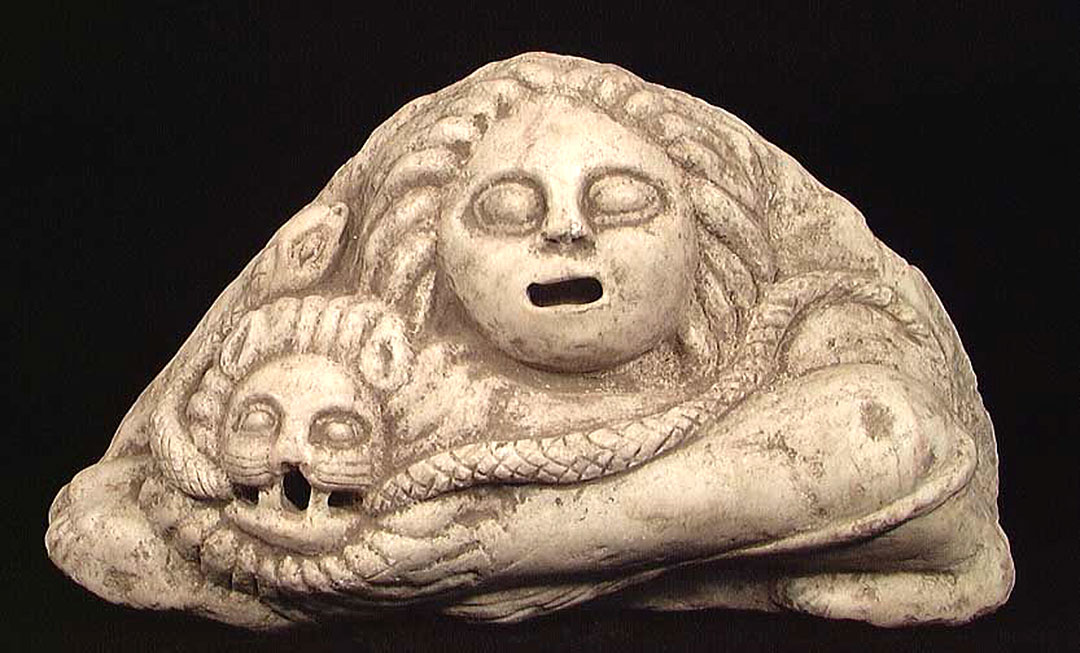The Treasury - Fine Medieval Art

MYSTERIOUS EARLY BIBLICAL SYMBOLOGY 9764. ROMANESQUE MARBLE SCULPTURE. France or Northern Italy, Romanesque period, c. 11th-13th century. A free standing triangular sculpture, likely from an early church, with a man with unkept hair, most likely Jesus, grasping the head of a lion which in turn holds a serpent in its mouth. Clearly a highly symbolic piece though the exact meaning is somewhat obscure. 5.5 x 10.5 x 19 inches. Excellent condition, all original with no repair or restoration. Extremely rare and a very remarkable piece of early Christian iconography. Provenance: An extensive North Eastern collection. Acquired in the 1980's from a New York dealer.
Though not certain, the symbology of this piece most likely refers to Psalm 91:11-13 "Thou shalt tread upon the lion and adder: the young lion and the dragon shalt thou trample under feet." which is traditionally taken to refer to the defeat of Satan (represented by the serpent and the lion) by Jesus. The passage led to the Late Antique and Early Medieval iconography of Christ treading on the beasts, in which two beasts are often shown, usually the lion and snake or dragon, and sometimes four, which are normally the lion, dragon, asp (snake) and basilisk (which was depicted with varying characteristics) of the Vulgate. All represented the devil, as explained by Cassiodorus and Bede in their commentaries on Psalm 91.[34] The serpent is often shown curled round the foot of the cross in depictions of the Crucifixion of Jesus from Carolingian art until about the 13th century; often it is shown as dead. The Crucifixion was regarded as the fulfillment of God's curse on the Serpent in Genesis 3:15. Sometimes it is pierced by the cross and in one ivory is biting Christ's heel, as in the curse.